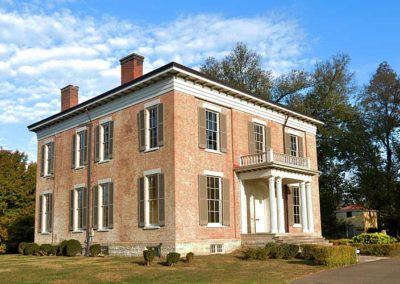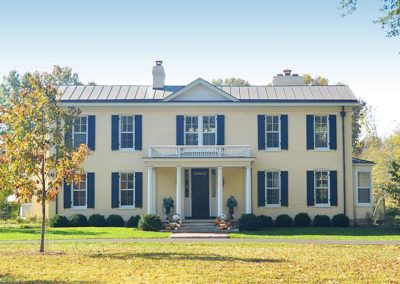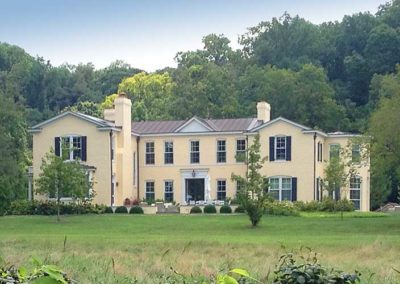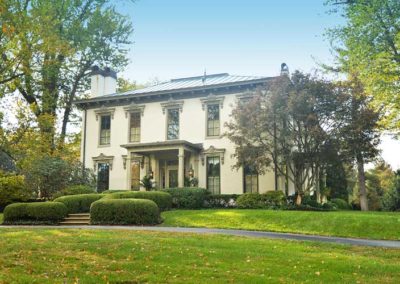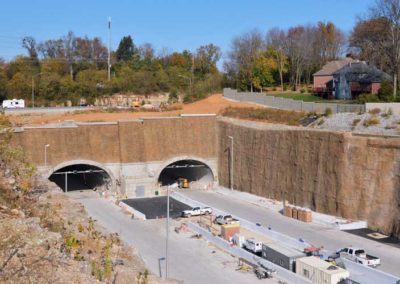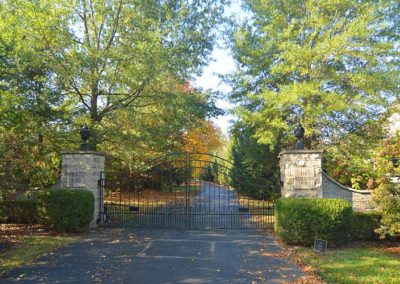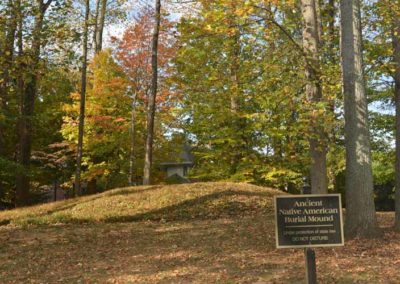Harrods Creek / Prospect
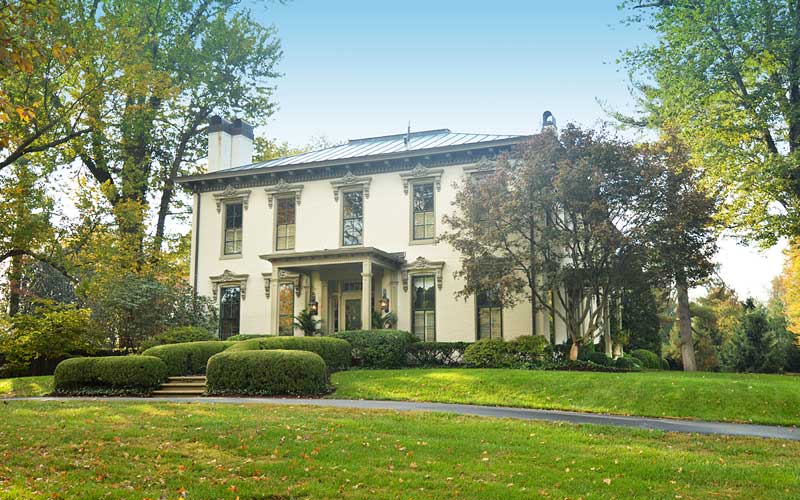
Harrods Creek – A diverse settlement at this Ohio River creek inlet before 1775, became well known to flatboat travelers as a logical overnight stop for those wanting to avoid ‘undesirables and the disease-infested swamp’ down-river in Louisville.
Cargo unloaded at a wharf was sent on the Louisville-Westport Pike, today’s River Rd, or up the hillsides to Middletown and Jeffersontown. Thick stone walls and a fireplace inside today’s Captian’s Quarters restaurant are all that remains of the once popular Harrods Tavern from that era.
Situated between two creeks, the fertile farmland and water-powered mills in the area produced grains for the agricultural market. By the early 1800s river traffic just passed on by, the ferry to Utica, Indiana had become popular.
The farmland was dotted with estates, such as Ashbourne, built in the early 1800s. A frontier firm, that later became Transylvania University in Lexington, laid out an early city plan upriver, but it never materialized.
In 1877, the Louisville, Harrods Creek and Westport Railway reached the area but was never completed to Westport, the line became part of the Louisville & Nashville rail network in 1881.
Louisville’s prominent and wealthy built estates on the hilltops, including Nitta Yuma (American Indian for High Ground) on Wolf Pen Branch Rd. in the 1890s.
The interurban railroad of the early 1900s fostered a new suburb that mirrored two other suburbs in the county at the time, Anchorage and Glenview.
The area had an African-American enclave centered on an area known as ‘The Neck’ at the Harrods Creek bridge.
Prospect – Native America Indians were removed and the Europeans created a town after the railroad came through in the late-1800s, the interurban railroad brought more growth to the area, which remained a rural outpost with a mix of residents, blacks descended from slaves, wealthy landowners, and poor whites who worked on the farms.
The Prospect Store, north on U.S. 42. across from Rose Island Rd., opened around 1911, and was considered the quintessential country store and the center of town on the road to Cincinnati. The store was later moved to the other side of the highway and converted into apartments.
The ornate brick farmhouse built in the mid-1800s by James Trigg, at Covered Bridge Rd. and U.S.42, hosted the 1940s entertainer and big-band musician Benny Goodman at a square dance and dinner party following his performance with The Louisville Orchestra. Another guest, author John Steinbeck, wrote “Ode to the Kentucky Derby” in the home on a typewriter borrowed from his hosts, which appeared the next day in The Courier-Journal.
Across the street from the Trigg residence was Sutherland Farms, developed as a pricy subdivision, has an Indian burial mound dating from 100 B.C. to 200 A.D.
Prospect became an enclave of high-price subdivisions after the city was incorporated in 1974.
GALLERY
Drumanard Tunnel
1700-foot long I-265 tunnel built underneath the Drumanard Estate, part of the approach path to the East End bridge.
